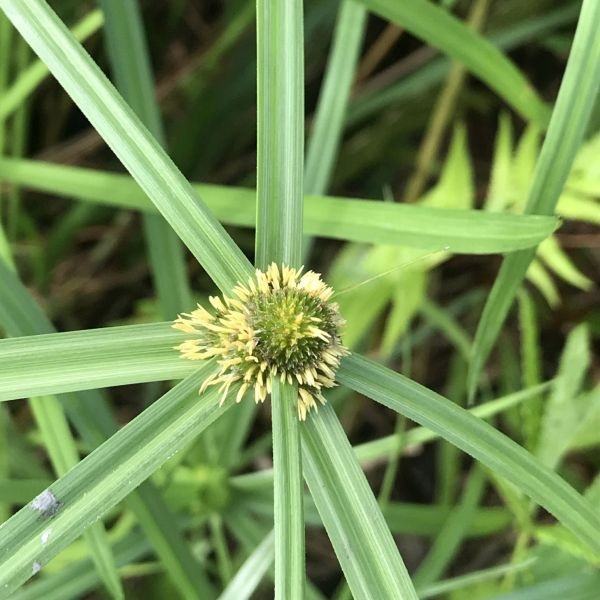June 4, 2024 – Green Kylinga (Kyllinga brevifolia) is a problematic perennial sedge that thrives in warm, moist environments, often invading lawns, gardens, and agricultural fields across Texas. The Texas A&M AgriLife Extension Service provides extensive resources and strategies for managing this invasive weed, emphasizing a combination of cultural, mechanical, and chemical control methods to effectively combat its spread. Green Kylinga is characterized by its bright green, grass-like leaves and distinct cluster of spikelets at the end of its stems, forming a small, rounded seed head. It often grows in dense patches, which can outcompete desirable turfgrasses and other plants, leading to unsightly and unhealthy lawns and fields. Effective management of Green Kylinga starts with proper lawn care practices aimed at creating unfavorable conditions for its growth.
Since Green Kylinga prefers moist, poorly drained soils, improving drainage is crucial. This can be achieved through soil aeration, the installation of drainage systems, or simply adjusting irrigation practices to avoid overwatering. Maintaining a healthy lawn through proper mowing, fertilization, and irrigation can also help outcompete Green Kylinga. Mow at the recommended height for your turfgrass species to promote dense growth, which can shade out weed seedlings. Fertilize according to soil test recommendations to ensure your lawn has the nutrients it needs to thrive. Mechanical methods, such as regular mowing and hand-pulling, can reduce the presence of Green Kylinga, although they may not completely eradicate it. Mowing can prevent the weed from flowering and producing seeds, thus limiting its spread. However, because Green Kylinga has a robust underground rhizome system, mechanical control alone is often insufficient for long-term management.
Herbicides can play a significant role in controlling Green Kylinga, especially when combined with cultural and mechanical methods. Pre-emergent herbicides can prevent seeds from germinating, providing a proactive approach to management. Post-emergent herbicides, applied directly to existing plants, can help eliminate established patches of Green Kylinga. Selecting the appropriate herbicide is critical. Products containing active ingredients such as halosulfuron or sulfentrazone are often effective against sedges like Green Kylinga. It’s essential to follow label instructions carefully to ensure effective application and to minimize damage to desirable plants. For specific herbicide recommendations and application timing. Managing Green Kylinga requires an integrated approach that combines proper lawn care, mechanical removal, and the strategic use of herbicides.
By following the guidelines provided by the Texas A&M AgriLife Extension Service, homeowners and farmers can effectively reduce the impact of this invasive weed and maintain healthy, attractive landscapes. For more information on this or any other agricultural topic please contact the Hopkins County Extension Office at 903-885-3443 or email me at [email protected].






